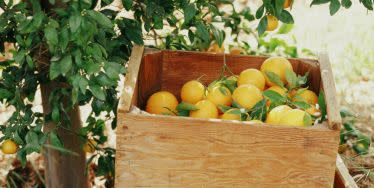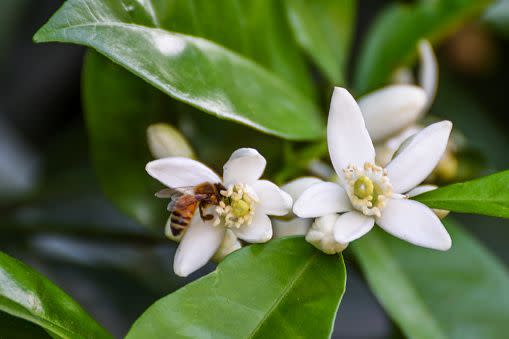Yep, A Lemon Tree Is Easier to Care For Than Most Houseplants

The Meyer lemon tree is one of our favorite citrus trees because it's so unique and agreeable. A hybrid of a lemon and a mandarin orange, the Meyer lemon tastes sweeter and more floral than a traditional lemon. It's also sweet in its temperament: A Meyer lemon tree smells fantastic is much easier to grow than you might think. It may be native to China, but it thrives between 50 and 80 degrees, which means you can grow Meyer lemons year-round in most of the United States. That's a good thing for people who like to cook and bake because it's pretty rare to find Meyer lemons in stock at the grocery store.
With a standard care routine, Meyer lemon trees are self-pollinating and resistant to many common pests. The standard-size plant can grow to between six and 10 feet tall, so it can live indoors in most homes, but you can prune it or opt for a dwarf variety if you don't want such a big tree. As for fruit, the Meyer lemon tree should produce citrus every year after it reaches maturity—i.e., around four years old.
Growing a citrus tree on your own may sound daunting—most of us aren't farmers—but we promise it's just as easy as caring for your favorite houseplant (and maybe easier in some cases). Ahead, check out our in-depth guide to Meyer lemon tree care.
Meyer Lemon Tree Requirements
A sunny spot in your house is what this fragrant tree needs most. Give it that and resist the urge to overwater it, and you'll be harvesting lemons before you know it.
Light
Bright and direct sunlight—up to eight hours per day—is ideal for a Meyer lemon tree. The more sunlight, the more egg-yolk-colored and flavorful the fruit will be. If your area doesn't allow for full and constant sun, opt for a grow light during the dark hours, but ensure that the tree primarily gets real sunlight.
Water
Overwatering is the most common care mistake you can make with a citrus tree. You want the soil to be consistently moist but never soggy—a fine line to walk. If the soil feels dry to the touch at least an inch down into the pot, thoroughly water the plant and let the excess water drain out. As a general rule, you should water your Meyer lemon tree about once every week or every two weeks during the winter. That said, never stick to a schedule, and always go by feel.

Soil
Remember, citrus loves warmer climates, so you'll want sandy, well-draining soil for your Meyer lemon tree. You can add fertilizer when repotting it or use coffee grounds or compost for a DIY method, but under the right conditions fertilizer isn't necessary. However, a little fertilizer can help your Meyer lemon tree combat the winter blues.
Temperature and Humidity
Happiest at room temperature, the Meyer lemon tree thrives at between 50 and 80 degrees. That means that it's ideal to grow one indoors, even in milder climates. If you want to keep your plant outside, pot it in a vessel that's easy to move inside in case of an unexpected heat wave or cold front.
The Meyer lemon tree loves mild humidity (around 50 percent on average), so occasionally placing a humidifier near it, especially in the winter, wouldn't hurt.
Pruning
Like any bush or tree, your Meyer lemon tree eventually will require some pruning. Using sharp, clean pruning sheers, prune your tree to your desired size or shape. Don't worry, it won't affect the tree's fruit-bearing abilities. There's only one rule to remember: Prune your Meyer lemon tree only in the winter once the fruit has dropped. It's a way to restart the tree's seasonal cycle.
How and When to Harvest the Fruit
A Meyer lemon tree can produce fruit year-round when it's planted outdoors in a warm climate. Indoors, however, a Meyer lemon tree will produce fruit only once a year in the spring. You can tell the fruit is ripening when the lemons look an orangey, egg-yolk color and feel slightly soft to the touch. To harvest them, grab a pair of pruning shears or a garden knife and carefully cut the ripe fruit off the tree at the stem. Avoid pulling the fruit off the tree by hand—you risk damaging the tree or accidentally pulling off full branches.
You Might Also Like
